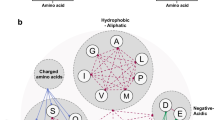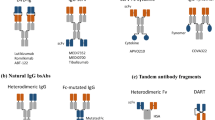Abstract
Antibody responses can be useful markers of tuberculosis infection. However, the established immunoassay diagnostic method is limited by antigenic variability. Replacing the recombinant proteins with aptamers may overcome these antigenic challenges. In this study, we systematically monitored the selection process of aptamers against anti-MPT64 antibodies of Mycobacterium tuberculosis to obtain more aptamers for developing a multisite system to increase the sensitivity of TB serological diagnosis. Twelve high-affinity aptamers with distinctive secondary structures were obtained by analyzing the dynamic evolution of aptamers against anti-MPT64 antibodies in the process of system evolution of ligands by exponential enrichment (SELEX). Pocket and stem-loops were found to be the basis of these aptamers binding to antibodies. Point mutations of highly conserved nucleotides in the pocket and stem-loop structures resulted in decreased affinity of aptamers to targets. To test the potential of these aptamers for future use in a serological diagnostic tool, three high-affinity aptamers with different epitope specificities were applied as capture aptamer in an enzyme-linked immunosorbent assay (ELISA) with sera of TB patients. The results showed that three aptamers all effectively bound anti-MPT64 antibodies from TB patients and had high specificity and sensitivity. These aptamers with high immunoreactivity in human sera may represent an efficient and promising analogue of MPT64 and have potential to substitute MPT64 as a nucleic acid antigen in the serological diagnosis of TB. Moreover, these aptamers with different epitope specificities may facilitate the development of a sandwich assay platform or a multisite system to effectively capture more targets in sera.









Similar content being viewed by others
References
Hermann T, Patel DJ (2000) Adaptive recognition by nucleic acid aptamers. Science 287:820–825
Nomura Y, Sugiyama S, Sakamoto T, Miyakawa S, Adachi H, Takano K, Murakami S, Inoue T, Mori Y, Nakamura Y, Matsumura H (2010) Conformational plasticity of RNA for target recognition as revealed by the 2.15 A crystal structure of a human IgG–aptamer complex. Nucleic Acids Res 38:7822–7829
Wang HQ, Wu Z, Tang LJ, Yu RQ, Jiang JH (2011) Fluorescence protection assay: a novel homogeneous assay platform toward development of aptamer sensors for protein detection. Nucleic Acids Res 39:e122
Qin LH, Zheng RJ, Ma ZZ, Feng YH, Yang H, Ding YS, Wang J, Lu JM, Jin RL, Liu ZH, Hu ZY (2009) The selection and application of ssDNA aptamers against MPT64 protein in Mycobacterium tuberculosis. Clin Chem Lab Med 47:405–411
Zhu C, Liu J, Ling Y, Yang H, Liu Z, Zheng R, Qin L, Hu Z (2012) Evaluation of the clinical value of ELISA based on MPT64 antibody aptamer for serological diagnosis of pulmonary tuberculosis. BMC Infect Dis 12:96
Oettinger T, Andersen AB (1994) Cloning and B-cell-epitope mapping of MPT64 from Mycobacterium tuberculosis H37Rv. Infect Immun 62:2058–2064
Elhay MJ, Oettinger T, Andersen P (1998) Delayed-type hypersensitivity responses to ESAT-6 and MPT64 from Mycobacterium tuberculosis in the guinea pig. Infect Immun 66:3454–3456
Kamath AT, Feng CG, Macdonald M, Briscoe H, Britton WJ (1999) Differential protective efficacy of DNA vaccines expressing secreted proteins of Mycobacterium tuberculosis. Infect Immun 67:1702–1707
Silva VM, Sardella IG, Luiz RR, Cunha AJ, Cavalcanti AH, Mahavir S, Barreto MM, Rodrigues RS, Carvalho TF, Saad MH (2008) Immunoreactivity of five antigens of Mycobacterium tuberculosis in patients attending a public health care facility in an area with high endemicity for TB. Microbiol Immunol 52:544–550
Baassi L, Sadki K, Seghrouchni F, Contini S, Cherki W, Nagelkerke N, Benjouad A, Saltini C, Colizzi V, El Aouad R, Amicosante M (2009) Evaluation of a multi-antigen test based on B-cell epitope peptides for the serodiagnosis of pulmonary tuberculosis. Int J Tuberc Lung Dis 13:848–854
Chinese Society of Tuberculosis, Chinese Medical Association (2001) The guide for diagnosis and treatment of pulmonary tuberculosis. Zhonghua Jie He He Hu Xi Za Zhi 24(2):70–74
Yang H, Liu ZH, Zhang LT, Wang J, Yang HS, Qin LH, Jin RL, Feng YH, Cui ZL, Zheng RJ, Hu ZY (2011) The selection and application of peptide mimotopes of MPT64 protein in Mycobacterium tuberculosis. J Med Microbiol 60:69–74
Chinese Antituberculosis Association (1995) Chinese laboratory science procedure of diagnostic bacteriology in tuberculosis. Chinese Antituberculosis Association, Beijing, China
Abe C, Hirano K, Tomiyam T (1999) Simple and rapid identification of the Mycobacterium tuberculosis complex by immunochromatographic assay using anti-MPB64 monoclonal antibodies. J Clin Microbiol 37:3693–3697
Tamura K, Dudley J, Nei M, Kumar S (2007) MEGA4: Molecular Evolutionary Genetics Analysis (MEGA) software version 4.0. Mol Biol Evol 24:1596–1599
Song KM, Lee S, Ban C (2012) Aptamers and their biological applications. Sensors (Basel) 12:612–631
Shi H, Fan X, Sevilimedu A, Lis JT (2007) RNA aptamers directed to discrete functional sites on a single protein structural domain. PNAS 104:3742–3746
Minunni M, Tombelli S, Gullotto A, Luzi E, Mascini M (2004) Development of biosensors with aptamers as: the case of HIV-1 Tat protein. Biosens Bioelectron 20:1149–1156
Ikebukuro K, Kiyohara C, Sode K (2005) Novel electrochemical sensor system for protein using the aptamers in sandwich manner. Biosens Bioelectron 20:2168–2172
Steingart KR, Henry M, Laal S, Hopewell PC, Ramsay A, Menzies D, Cunningham J, Weldingh K, Pai M (2007) Commercial serological antibody detection tests for the diagnosis of pulmonary tuberculosis: a systematic review. PLoS Med 4:e202
Steingart KR, Dendukuri N, Henry M, Schiller I, Nahid P, Hopewell PC, Ramsay A, Pai M, Laal S (2009) Performance of purified antigens for serodiagnosis of pulmonary tuberculosis: a meta-analysis. Clin Vaccine Immunol 16:260–276
Chan ED, Heifets L, Iseman MD (2000) Immunologic diagnosis of tuberculosis: a review. Tuber Lung Dis 80:131–140
Huang Z, Szostak JW (2003) Evolution of aptamers with a new specificity and new secondary structures from an ATP aptamer. RNA 9:1456–1463
Weill L, Louis D, Sargueil B (2004) Selection and evolution of NTP-specific aptamers. Nucleic Acids Res 32:5045–5058
Chiang IH, Suo J, Bai KJ, Lin TP, Luh KT, Yu CJ, Yang PC (1997) Serodiagnosis of tuberculosis: A study comparing three specific mycobacterial antigens. Am J Respir Crit Care Med 156:906–911
Harboe M, Wiker HG, Nagai S (1992) Protein antigens of mycobacteria studied by quantitative immunologic techniques. Clin Infect Dis 14:313–319
Acknowledgements
This work was supported by the Ministry of Science and Technology of the People’s Republic of China (No.2012ZX10003002-008), the National Natural Science Foundation of China (No. 81201254), and the Science and Technology Commission of Shanghai Municipality, Shanghai, P. R. China (No.11ZR1430200).
Conflict of interest
The authors declare that they have no conflict of interest.
Author information
Authors and Affiliations
Corresponding authors
Rights and permissions
About this article
Cite this article
Qin, LH., Liu, ZH., Yang, H. et al. Dynamic evolution and immunoreactivity of aptamers binding to polyclonal antibodies against MPT64 antigen of Mycobacterium tuberculosis . Eur J Clin Microbiol Infect Dis 33, 1199–1209 (2014). https://doi.org/10.1007/s10096-014-2056-4
Received:
Accepted:
Published:
Issue Date:
DOI: https://doi.org/10.1007/s10096-014-2056-4




